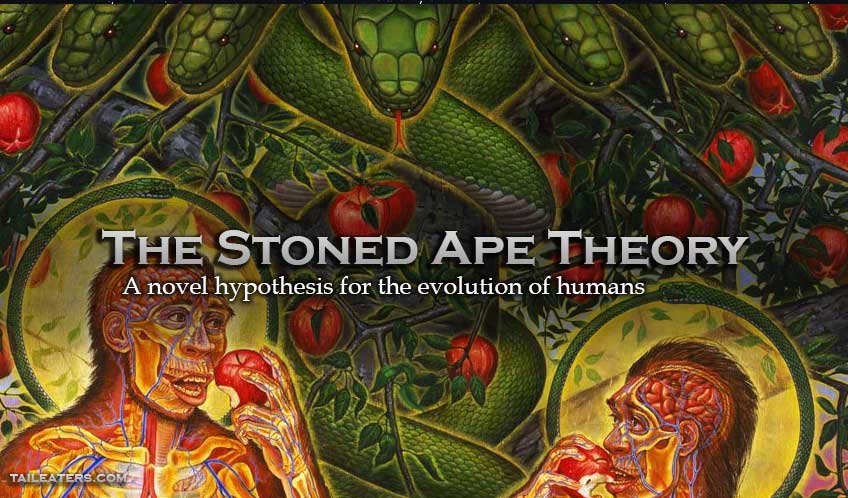
Stoned Ape Hypothesis/Theory
One of the greatest mysteries of human evolution is the transformation of the primate brain into the human brain, for which the stoned ape theory provides an answer. The reason this is a mystery is primarily two-fold: first, there are gaps in the archaeological record, particularly in the explanation of how the human brain size increased drastically over the course of possible two million years; second: why should human culture have come into existence? This is a curious problem the stoned ape theory seeks to address, since humans are distinct from every other animal to the best of our knowledge because of our development and transmission of culture. Given that our culture—a materialist oriented one—seems to be a unique creation among the denizens of the animal kingdom, this second issue poses a major problem for those who study evolution: it does not make sense given the leap forward it represents. That leap forward is generally minimized in its strangeness, and it rests within wherever human consciousness came from.
Aside from these two issues, there are other smaller questions left unresolved in the study of human evolution; the stoned ape theory serves as a kind of unified explanation for some of these many disparate issues in evolution. Although numerous evolutionary explanations exist for each of these many questions these explanations are separate and often unrelated, posing an inconvenient problem for the field of evolution. Science invariably seeks unifying theories and the stoned ape theory provides this for evolution. Further, these explanations are conjectural and often based on little evidence, which happens to be the primary critique of the stoned ape theory—thus the most common critique of the stoned ape theory make little sense. Among these unresolved questions are:
- How did humans develop such a complex visual cortex, and why?
- Where did religious or spiritual experience come from, and does this experience relate to the formation of culture?
- Why are humans uniquely altruistic to such a great extent, unlike few others in the animal kingdom?
- Where did language come from?
Terence McKenna and the Stoned Ape Theory
Terence McKenna is perhaps the best known proponent of psychedelics; he is also the first known explicator of what is best known as the stoned ape theory. Although theory will be used here for sake of not being confusing, a more appropriate term is stoned ape hypothesis. This is because a hypothesis is a possible explanation that seems reasonable to pose but which has no direct scientific evidence supporting it; theory implies there is a fair amount of direct evidence supporting a hypothesis, but still does not imply certain truth. Evidence in this case means both correlation and causal evidence, which is very difficult to prove given the period of time the stoned ape theory would have occurred in, possibly beginning up to two million years ago.
The stoned ape theory posits that humans started emerging from our primate ancestors into anatomically modern humans by ingesting large numbers of psilocybe cubensis present in migrating herds’ dung. As climate changes resulted in a aridification of the Earth 100,000’s years ago, environmental pressures from a dwindling food supply in tropical environments would have forced some primates to seek out alternative food sources and environments.
Extending out to the African Savannah, these primates may have encountered and followed herds which were hunted for food, out of whose dung psilocybe cubensis would have presented an ideal environment to grow in. In seeking alternative food sources, some primates would have become stoned apes by ingesting large numbers of psilocybin as an additional food source. This process may have occurred over a few 100,000 or even two million years–the timeline is uncertain. Over some amount of time early humans would have consumed countless numbers of these mushrooms.
Visual Acuity
McKenna’s stoned ape theory suggests that ingesting these mushrooms created a number of major cognitive effects which yielded significant evolutionary advantages. Among these are a definitive effect on visual acuity which would have given evolutionary advantages to stoned apes through hunting ability (Fischer, Hill, Thatcher, & Scheib, 1970). Thus, stoned apes would have had more success and required less effort to kill game as a direct result of taking mushrooms. Aside from improving hunting ability, heightened visual acuity and edge detection should have given humans slight advantages in finding other hard to spot forms of food and in sighting dangers. Although psilocybin’s effects would have very gradual developing the visual cortex, these advantages would have been ripples making large waves down the evolutionary line.
The Stoned Ape Theory as Orgy Fest
McKenna suggests further that higher doses of psilocybin produces heightened sexual activity. Given that psilocybin has been found to produce a more open personality, part of the stoned ape theory postulates that ingesting mushrooms would have similarly led to a more orgiastic state of sexual intercourse among these earliest humans.
An orgiastic culture induces evolutionary benefits in multiple ways which helps lend support to the stoned ape theory. First, if a woman has sex with multiple men, the most potent sperm of all will fertilize the female egg, meaning offspring will have the greatest evolutionary fitness for survival. Second, in the stoned ape theory these earliest human/primate hybrids would not know who the father of various children were and thus there would not be the same selfish control of children, a pernicious behavior which exists in modern humans. By this, I mean that the ego as obsessive control of woman’s reproduction and selfish exclusive emphasizing of survival of a male’s own children would be deemphasized, since the stoned ape theory suggests that men would not know whether any children were theirs or other males’. Thus a more communal style of living would be promoted by the stoned ape theory.
Although the orgiastic part of McKenna’s stoned ape theory is interesting, I did not find significant scientific evidence to support it beyond the possible connection with the personality domain of openness. The scant direct evidence available relating psilocybin’s effects on the libido comes from personal reports of others and perhaps empirically from a time when such orgiastic tendencies were more on display, such as in the hippie era. A possibly more sexual, hornifying dose seems to result from the micro or threshold dose levels, which are <.5 grams and 1 – 3 grams, respectively, according to Thomas Hatsis (2018). Other evidence from subjective trip reports have elements of sexuality involved as well.
Where did Culture Come From?
Something unique to humans is our hyperdevelopment of culture which the stoned ape theory provides convenient explanations for; although there is evidence of signs of culture among certain groups of animals, such as primates making tools and some species having highly complex language systems, these forms of culture are limited in a material sense, since only humans build massive material dedications to such abstract concepts. These forms include art, music, writing, language, constructing things, among various outlets of creativity.
The Mystical Experience – Culture as Religion
One answer lacking in the field of evolution is where that which we call human culture—our shared patterns of beliefs and behaviors—came from in the first place, how, and most curiously, why. According to the stoned ape theory, psilocybin might have been the critical impetus in causing this otherwise bizarre manifestation to appear. One major avenue might have been creativity, which is intricately intertwined with the imagination; creativity is likely endemic to spiritual experiences given the connection the mystical experience seems to have with alternate ways of viewing reality.
Other research supports the idea that psilocybin seems to fit in with a “model of early psychosis“. Psychosis is the blurring of reality, which could be endemic as requirement of the original religious experience. Given the historical tendency of mystics, prophets, seers, saints, and others towards being psychotic in popular conception, the stoned ape theory might make sense.
In Westerners, for example, there is a strong proclivity for psilocybin to directly cause these mystical experiences, with up to 72% having such an experience in one study (Griffiths, Johnson, Richards, Richards, McCann, and Jesse, 2011). These mystical experiences are often reported as one of the most significant spiritual experiences in people’s lives, and they persist for well over a year after the experience (Griffiths, Richards, Johnson, McCann, & Jesse, 2008). Given this spontaneous appearance of imagery, which also may in part depend on one’s preconceived religious beliefs, the stoned ape theory would not be far-fetched as explaining the origins of culture.
A better question though is whether the mystical experience of psilocybin transcends cultural boundaries, particularly in cultures which are atheistic by modern standards, such as China or Russia. If people in these cultures also have spiritual experiences, then the mystical nature of psilocybin may be universal and would further support the stoned ape theory.
Although the mystical experience of psilocybin as the root of religion’s origins could be possible, scientific research in this area is understandably devoid given we are imperfectly seeking to explain something we did not observe and must speculate upon. In order for the stoned ape theory to have more weight, definitive research sourcing the earliest origins of religion must be conducted. However, one study suggests religion started with animism, which is seeing life or consciousness in plants, animals, or inanimate objects in nature (Peoples, Duda, & Marlowe, 2016).
Given that psilocybin increases connectedness to nature, it isn’t a giant leap to suggest that this connectedness would result in a stoned ape seeing life in nature where previously they did not see life (Lyons & Carhart-Harris, 2018). Being more connected to nature in some sense facilitates seeing such life, if anyone who has spent increasing amounts of time in the forest can relate. If this animism-nature connection is true, it would strongly support the stoned ape theory by explaining where religion came from.
Culture as Art
Another element of early culture that psilocybin and the stoned ape theory could have propagated is artwork, which is an abstract concept when we think about it. Artwork is by nature introspective, reflecting the psyche, and in terms of the Default Mode Network coming back online after one experiences the externally-oriented Task Positive Network, the DMN may be stronger and more introspective. Thus, one steps outside themselves, then internalize that experience to become more creative, working through ideas gleaned from the experience. Although it is a leap of logic not yet warranted by research, it wouldn’t be entirely unfounded to see how these two might be related.
People generally report becoming more creative after a psilocybin experience. This appears to be intricately connected with the mystical aspect of using psilocybin (Maclean, Johnson & Griffiths, 2011). As someone steps outside themselves, seeing not only their illusory self-ego but also other humans and the world from a new light, becoming more open to alternate ideas occurs through the personality domain openness.
Of the big five personality traits–neuroticism, conscientiousness, extroversion, agreeableness, and openness–the latter seems most obviously connected to creativity. Psilocybin further increases imagination, creativity, and aesthetic appreciation, the latter of which is essential to recognizing and creating art; one must appreciate abstract subjective qualities in a piece of artwork for someone to both create and recognize other external representations as artistic. In order to create, one must imagine the creation first, and hallucinogenic substances such as psilocybin could be easily seen to stimulate such imagination through early psychosis and hallucination. If the creation of art was at the root of culture, it is easy to see how the stoned ape theory could have been involved.
This early cave painting in Algeria depicts a shaman ensconced by honey and mushrooms. Mushrooms were involved in at least some early art.
Language and the Stoned Ape Theory
One other area Terence McKenna pointed to in support of the stoned ape theory is the development of language. McKenna suggests that psilocybin stimulated the growth of Broca’s area—where language may have originated—and helped result in what may have been the earliest form of language: spontaneous glossolalia, which resembled the phenomena of speaking in tongues. If you have ever seen someone speak in tongues or tried to yourself, it is easy to conclude that it is an imaginative exercise rooted in being creative with language. Given that it requires releasing control, which I liken to dampening the ego, it would make sense this is easier under the influence of psilocybin. If spontaneous glossolalia is in fact creative, the stoned ape theory also gains additional support since language’s development would have been a creative act. Spontaneous glossolalia taken further through singing is clearly a creative act, which lends further credence to the stoned ape theory.
Important to note, however, is that beyond the possible connection with language’s source and creative use of the voice, I could find no direct evidence of psilocybin and by proxy the stoned ape theory resulting in the forced development of this specific language-centric portion of the brain. McKenna (1992) felt this was the case, however.
Stoned Apes Becoming Altruistic
Another problem with human evolution is the human capacity for self-sacrifice—altruism— particularly towards those not directly related to us. This is relatively abnormal behavior in the animal kingdom, particularly among some of our more distant primate ancestors. The further back we go, towards reptiles, the more egocentric and less capable of altruism or social systems our ancestors appear capable of. Altruism is abnormal because resources are scarce; giving our time, attention, or even food to aid the survival of others implies a risk to self or one’s offspring: if I give you my energy or my calories, I divert something away from myself or my offspring. When survival is a great battle, unlike today’s ease for humans, this is not a logical thing to do. I recall in studying anthropology the common explanation for this behavior is that altruism entails rewards later on. Even so, the decision to willfully become altruistic requires an extraordinary leap of forward-thinking that cannot be so explained away in my view, since it still does not get to the reason why the change precipitated. The stoned ape theory offers such an explanation for how such changes came about.
Through the use of psilocybin, the stoned ape theory provides a very convincing explanation for how this behavior started developing in humans and has become so widespread that the fabric of our entire civilization is founded upon and hinges upon this social contract. This unwritten social contract, on which the West’s legal system is based, is inseparable from our ability to function as a cohesive society. Prior to civilization, humanity was entrenched in a kind of cycle of never-ending revenge as seen in the most recent indigenous cultures prior to becoming acclimated to civilization. Furthermore, without these moments of selflessness humans may feel spurned or unwanted, and such feelings are counterproductive to a functioning tribe or civilization. The result of anti-social non-altruism is more murder, violence, theft, and general distrust, all of which the stoned ape theory would seem to counteract. In other words, civilized society would have eroded without this natural instinct for distrust dissolving, the ego or self-centeredness dissolving.
In causing a momentary loss of ego, seeing the world and self from outside for several hours, psilocybin yields an alternate perspective that, for me, inescapably leads to realizations of how I can better treat others and how I have behaved selfishly. Research supports that psilocybin decreases authoritarian viewpoints, which is a proxy for being less selfish and thus altruistic (Lyons & Carhart-Harris, 2018). Furthermore, psilocybin leads to pro-social behaviors being reinforced, including greater interpersonal closeness, gratitude, and forgiveness, all of which play obvious roles (Griffiths, et al., 2018). Another conclusive finding is greater feelings of empathy towards others (Pokorny, Preller, Kometer, Dziobek, & Vollenweider, 2017). Empathy entails the ability to see another’s perspective and is intricately connected with being more kind, compassionate, and caring, particularly towards non-relations.
In terms of altruism as essential to our evolution, psilocybin could have certainly played a role and the stoned ape theory holds greater weight in this area.
Default Mode Network and Stoned Ape Theory
The main method through which psilocybin would have instigated evolution as told through the stoned ape theory was orienting those who ingest it towards a more externally-oriented perspective, through the Task Positive Network. This is opposed to our normal functioning mode, the Default Mode Network, which otherwise could be referred to as the ego. When psilocybin is ingested the Default Mode Network, which is introspective, is deemphasized while the externally oriented task-positive network is emphasized (Carhart-Harris, et al., 2012).
According to the stoned ape theory, diminishment of this Default Mode Network as the ego would have provided a gap through which our ancestors had a window to see outside of themselves. This window looking from the outside in is potentially one of the key mechanisms through which pro-social and altruistic behaviors can develop since one is forced into, if only for several hours, a full display of one’s selfish behavior (Griffiths, et al., 2018).
Furthermore, given at least some of modern cultures’ emphasis on manipulating our material world, one possibly pernicious outcome of the Default Mode Network being minimized during the experience is that culture resulted from the ego’s brief diminishment. If so, this would indicate the stoned ape theory was anything but benign by affecting the planet’s destruction. This notion challenges Terence McKenna’s widely-told view that ego dissolution, which occurs briefly in the psilocybin experience, will necessarily result in the betterment of humanity. In other words, psilocybin, in context of the stoned ape theory, may have played a pivotal role in the obsessive manipulation of the material world by way of the ego, the Default Mode Network, possibly being strengthened each time it comes back online after each dissolution. This possibly pernicious and undesirable outcome of using psilocybin is not discussed by McKenna when he related the stoned ape theory. A brief imagination exercise illustrates this:
Imagine you take psilocybin and have some genius idea such as building a temple, making art, or bringing some gift of technology to your culture which makes life easier. Now, imagine how that idea you bring could have created far-reaching effects: your tribe carves stone to build a monument standing for thousands of years, creates tools which lead to more tools. Imagine the waves these ripple effects would eventually create.
Although these early cultural forerunners would not have intended to shape the world as it did today, the mystical experience via stoned ape theory could have played a major role bringing this about. In this sense, the cultural waves which initial psilocybin experiences produced could not have been anticipated by early primates.
The Search for the Tree of Knowledge
In the Biblical narrative, the Tree of the Knowledge of Good and Evil is portrayed as a curse. This is similar to the aforementioned idea of psilocybin unintentionally producing culture and its many modern forms. This challenges the stoned ape theory, plausible though it is, as a process beneficial to the planet. Carl Jung (2008) echoes this sentiment. If Terence McKenna viewed psilocybin as a tool for returning to archaism, as he seems to indicate in the stoned ape theory, then the uncontrolled mystical psilocybin experience would also lead to futurism, since it was the source of consciousness and culture. However, these initial forms of culture may be benign–say a seemingly innocuous spiritual belief spread to a tribe–in that later humans then took those forms into out of control directions.
The Tree of the Knowledge of Good and Evil represents human consciousness coming about. From consciousness sprang self-awareness, and thus shame. Good and Evil, as manifestations of the same consciousness, also came about. Thus, morality came about from consciousness. The stoned ape theory, as springing forth human consciousness, fits easily into the idea of psilocybin given the widespread effects psilocybin is purported to produce, all of which have sprung out of human consciousness—since other animals do not have culture, religion, altruism, or civilizations, seemingly. In Psilocybin, via the stoned ape theory as a process, McKenna may have found the real Tree of Knowledge, with the Garden of Eden as Earth, the process taking place over countless eons of humans eating mushrooms across savannas as fruits of the Earth.
Implications for Psilocybin Use
In some contradictory sense, the stoned ape theory’s strange relation to evolution still suggests psilocybin could represent a return to archaism, which is a return to what was before. This does not necessarily mean a life without technology, but it would mean a return to life without the more pernicious forms of technology in terms of artificial intelligence running our lives. In archaism, humans would engage in creativity, self-purpose, personal meaning, perhaps in harmony with nature.
This seems a viable outcome, yet it is not clear the world would want that to occur. Yet, given that artificial intelligence will soon be taking over all humans’ jobs, it may have to occur. The stoned ape theory explains the creation of mystical experiences and creativity, thus giving people meaning in their lives through their own art. Without jobs being a necessity for the majority in the near future, this meaning will be essential to create if humans are to create new lives in the brave new world we head towards.
One possible alternative to futurism and archaism is presentism, which could be reinforced in those using psilocybin by emphasizing that they treat it simply as just an experience, rather than the storyline which clings to the past or future.
Concluding Thoughts on the Stoned Ape Theory
The stoned ape theory is a compelling hypothesis which provides a potential unified explanation for many unanswered questions of how humans evolved from apes: where our radically larger brains came from so quickly, how culture developed, and how some of the critical foundations of tribalism and modern civilization came about. These questions have numerous lingering issues for which historians and evolutionists create a bevy of different explanations. In examining the evidence, I found that much scientific research reports a number of effects from psilocybin which would fall in line with the stoned ape theory. However, these pieces of evidence are correlational and not causal. Given this, the misnamed stoned ape theory is still just an interesting hypothesis, albeit a compelling one which merits further scientific research because of its potentially wide-reaching conclusions.
Among the ways science could further investigate the stoned ape theory as an explanation of human evolution might be testing the effects of creativity, openness, empathy, authoritarianism, and mystical experiences on ancestral primates, particularly chimpanzees. While other primates could be also observed empirically while on mushrooms, a more effective method might be comparing brain scans of humans and other primates while under these effects. If, for example, we can understand where empathy or creativity sources in the human brain, then a similar change in activity ought to result in a similar location within the ancestral primate brain if the stoned ape theory is true.
Scientists could also test the stoned ape theory by scanning primate brains for changes in activity in Broca’s area, the visual cortex, and other undeveloped portions of the primate brain. In so doing research would show—if the stoned ape theory is true—that psilocybin is directly increasing activity in these areas since they would have been crucial to early humans evolving away from our other primate ancestors.
There are possible avenues for science to explore the stoned ape theory and given the typically enjoyable nature of psilocybin, primates might not even be harmed in the process. Yet science has generally disregarded this and most of Terence McKenna’s other ideas because at their outset they can seem outlandish. Representing what he referred to as the key to the missing link, the Tree of the Knowledge of Good and Evil, there is a good reason for science to give the stoned ape theory careful scientific scrutiny if for no other reason than to disprove it.
As one final thought, consider that Paul Stamets has proposed that humans evolved from a fungus found 1.4 billion years ago. Given we may have descended from mushrooms, psilocybin in some sense is connecting humans to a form of life we have long since separated from. This connection makes the stoned ape theory all the more compelling.
References
Carhart-Harris, R. L., Leech, R., Erritzoe, D., Williams, T. M., Stone, J. M., Evans, J., Sharp, D. J., Feilding, A., Wise, R. G., … Nutt, D. J. (2012). Functional connectivity measures after psilocybin inform a novel hypothesis of early psychosis. Schizophrenia bulletin, 39(6), 1343-51. Retrieved from https://www.ncbi.nlm.nih.gov/pmc/articles/PMC3277566/
Carhart-Harris, R. L., Leech, R., Hellyer, P. J., Shanahan, M., Feilding, A., Tagliazucchi, E., Chialvo, D. R., … Nutt, D. (2014). The entropic brain: a theory of conscious states informed by neuroimaging research with psychedelic drugs. Frontiers in human neuroscience, 8, 20. doi:10.3389/fnhum.2014.00020
Fischer, R., Hill, R., Thatcher, K. & Scheib, J., (1970). Psilocybin-induced contraction of nearby visual space. Agents and Actions, 1(4). Retrieved from https://link.springer.com/article/10.1007%2FBF01965761
Griffiths, R., Richards, W., Johnson, M., McCann, U., & Jesse, R. (2008). Mystical-type experiences occasioned by psilocybin mediate the attribution of personal meaning and spiritual significance 14 months later. Journal of psychopharmacology (Oxford, England), 22(6), 621-32. Retrieved from https://www.ncbi.nlm.nih.gov/pmc/articles/PMC3050654/
Griffiths, R. R., Johnson, M. W., Richards, W. A., Richards, B. D., McCann, U., & Jesse, R. (2011). Psilocybin occasioned mystical-type experiences: immediate and persisting dose-related effects. Psychopharmacology, 218(4), 649-65. Retrieved from https://www.ncbi.nlm.nih.gov/pmc/articles/PMC3308357/
Griffiths, R.R., Johnson M.W., Richards, W.A., Richards, B.D., Jesse, R., MacLean, K.A., Barrett, F.S., Cosimano, M.P., Klinedinst, M.A. (2018). Psilocybin-occasioned mystical-type experience in combination with meditation and other spiritual practices produces enduring positive changes in psychological functioning and in trait measures of prosocial attitudes and behaviors. Journal of Psychopharmacology, 32(1). doi: 10.1177/0269881117731279
Hatsis, T. (2018). Microdosing magic: A psychedelic spellbook. Psanctum Psychedelia Press: Portland, OR.
Lyons, T., & Carhart-Harris, R. L. (2018). Increased nature relatedness and decreased authoritarian political views after psilocybin for treatment-resistant depression. Journal of psychopharmacology (Oxford, England), 32(7), 811-819.
MacLean, K. A., Johnson, M. W., & Griffiths, R. R. (2011). Mystical experiences occasioned by the hallucinogen psilocybin lead to increases in the personality domain of openness. Journal of psychopharmacology (Oxford, England), 25(11), 1453-61. Retrieved from https://www.ncbi.nlm.nih.gov/pmc/articles/PMC3537171/
McKenna, T. (1992). Food of the gods: The search for the original tree of knowledge, a radical history of plants, drugs, and human evolution. Bantam Press.
Peoples, H. C., Duda, P., & Marlowe, F. W. (2016). Hunter-Gatherers and the Origins of Religion. Human nature (Hawthorne, N.Y.), 27(3), 261-82. Retrieved from https://www.ncbi.nlm.nih.gov/pmc/articles/PMC4958132/
Pokorny, T., Preller, K. H., Kometer, M., Dziobek, I., & Vollenweider, F. X. (2017). Effect of Psilocybin on Empathy and Moral Decision-Making. The international journal of neuropsychopharmacology, 20(9), 747-757.
Andrew Haacke is a lifelong spiritual seeker who researches and writes about the Hero's Journey, symbolism, mythology, and psychedelics. He studied anthropology at the University of Utah and social work and public administration at the University of Southern California.
Join the Discussion
Want to discuss more about this topic and much more? Join our discussion group online and start exploring your consciousness with others like yourself

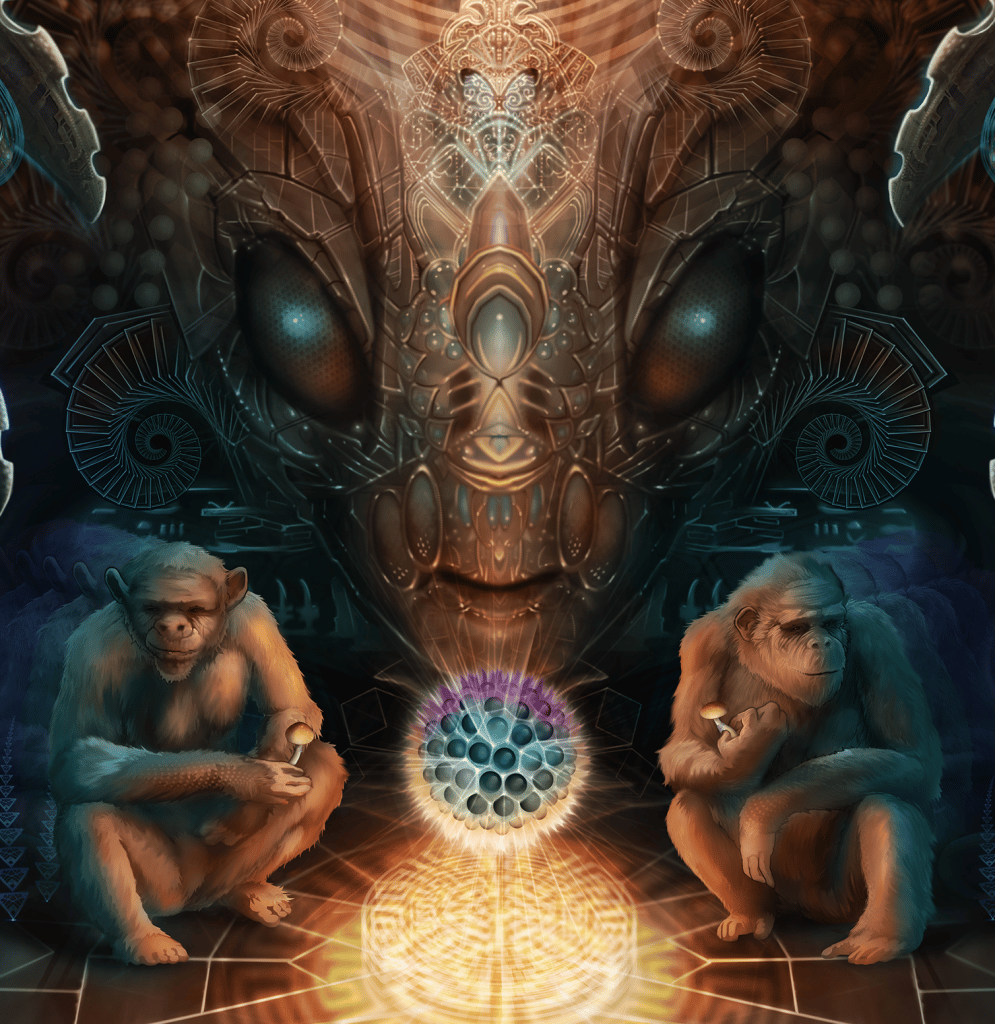



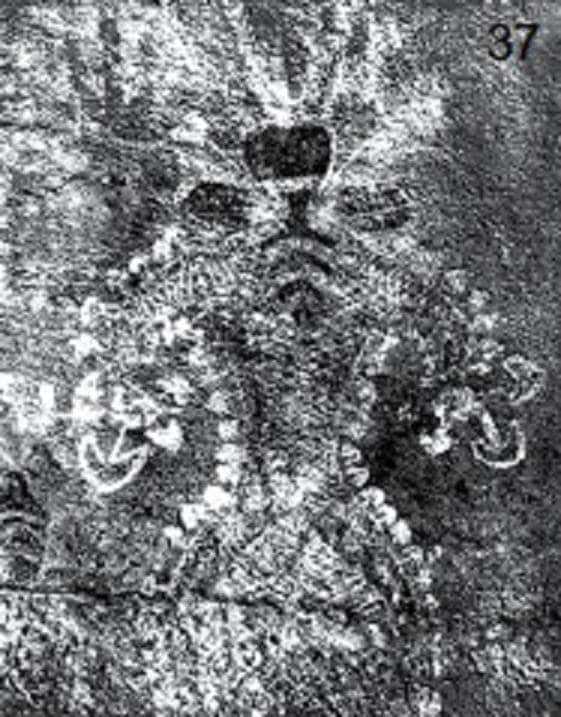
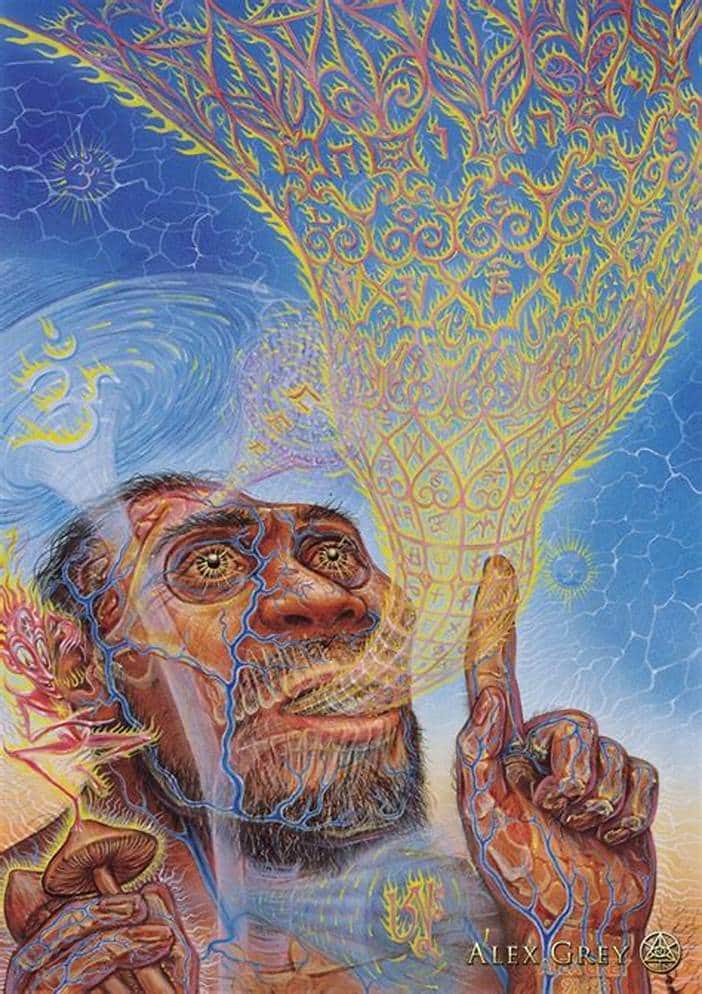
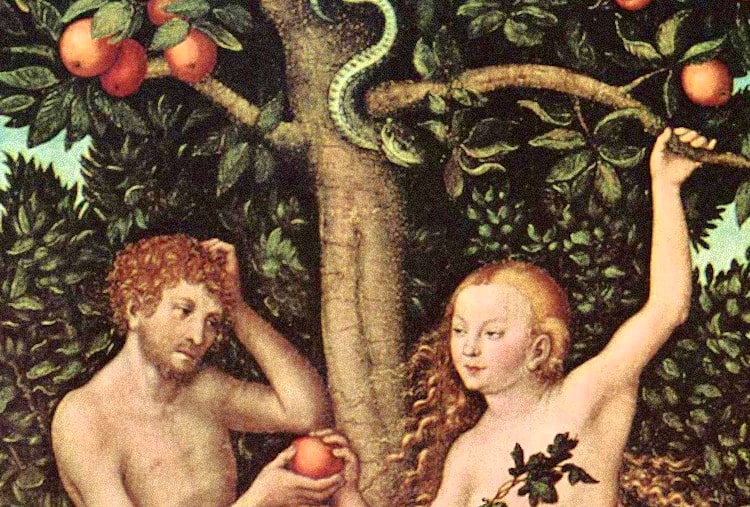

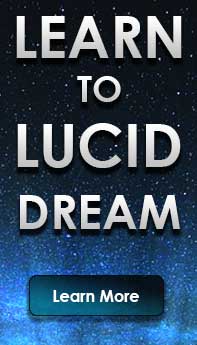
Recent Comments